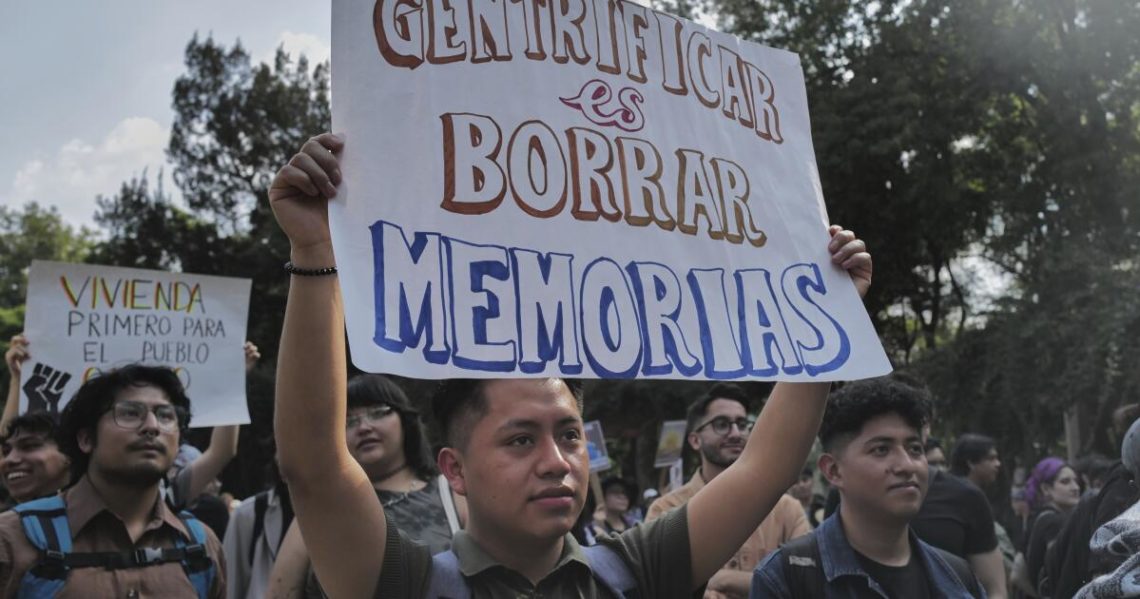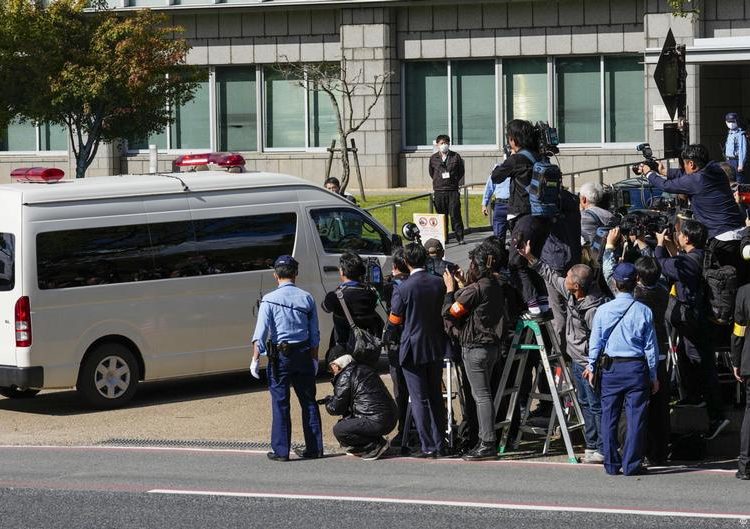MEXICO CITY — Since the early days of the pandemic, foreigners have flooded Mexico City, particularly Americans and Europeans drawn by the cost of living and possibilities of remote work.
During that time, several neighborhoods in the city center have transformed, with tortillerías, corner stores and barber shops replaced by wine bars, cafes and Pilates studios, many of which advertise in English. Rents have soared, and some locals have been priced out of their homes.
Some blame the city’s housing crunch and rising costs on the new arrivals — and the more than 35,000 Airbnbs operating here.
In recent days, that anger spilled into the streets.
A march against gentrification drew hundreds of people, with protesters holding signs that said “gringo go home,” and demanding that Mexican leaders curb short-term rentals and tax foreigners.
It was held on July 4 — U.S. Independence Day — and was advertised as a protest against “American imperialism.”
The march, which passed the U.S. Embassy, was mostly peaceful. But later, some marchers turned to vandalism, smashing windows of more than a dozen storefronts, including a bank, a popular taco chain and a Starbucks.
Videos showed protesters harassing tourists seated at an upscale taquería until they got up and left. Some patrons sitting at street-side cafes targeted by the demonstrators protested that they were Mexicans, not foreigners, in some cases flashing their identification cards.
In parts of the city, walls remain scrawled with graffiti: “My culture is not your trend” and “Kill a gringo.”
The protests, which echoed demonstrations against mass tourism and high housing costs in other places, including Barcelona, and Berlin, have challenged the long-held notion of Mexico City as a place that welcomes outsiders.
And they add fuel to rising bi-national tensions, as President Trump threatens tariffs on Mexican imports and seeks to deport immigrants living without authorization in the United States. Trump’s attacks on Mexico have sparked a wave of nationalism, with some people pushing a boycott of American products and companies embracing the red, green and white of the Mexican flag in ad campaigns.
On social media, where commentators both applauded and assailed the protests, the U.S. Department of Homeland Security joined in the fray, publishing a post on X on Sunday encouraging unauthorized immigrants to self-deport via a Customs and Border Protection application: “If you are in the United States illegally and wish to join the next protest in Mexico City, use the CBP Home app to facilitate your departure.”
Mexican leaders condemned the vandalism and the nativist tone adopted by many protesters.
“Xenophobic displays of this kind must be condemned,” President Claudia Sheinbaum said at her daily news conference on Monday. “Mexico is a country open to the world.”
But she stressed that protesters had legitimate complaints, and that “gentrification is a phenomenon that needs to be addressed.”
Mexico City Mayor Clara Brugada, who, like Sheinbaum, belongs to the leftist political party that controls much of the country, said the city must focus on building more affordable housing.
“We must continue implementing measures and public policies to combat these phenomena,” she said Monday. “The demand for housing and rents are increasing overnight, and residents are being evicted because they no longer have the economic means to live there.”
Sheinbaum, who was mayor of Mexico City before being elected president, was criticized during her term for not taking stronger action against the dispossession of longtime residents as landlords rented out properties to digital nomads, tourists and other foreigners. Demonstrators say the government is still not doing enough.
“We’re not against migration, which is a human right,” one of the collectives that organized the march wrote in a statement. “But we have to recognize that the state, institutions and both local and foreign businesses offer different treatment to those with greater purchasing power.”
Analysts have pushed back on the claims that an influx of foreigners is largely to blame for rising costs in Mexico City.
“The reality is that, with or without gringos, housing in Mexico has become enormously more expensive,” Viri Ríos, a political scientist, wrote in El País newspaper. From 2005-21, home prices throughout Mexico increased by 247%, she said. That includes states with low tourist flows, such as Morelos, where prices increased 193%. She said increases in Mexico City have actually decelerated since the pandemic.
“The rise in Mexico City precedes the gringos, is happening throughout the country and has causes that go beyond the arrival of tourists or digital nomads,” she wrote. More to blame, she said: High construction costs and public policies that mean building is not keeping up with demand. She said Mexico City officials had embraced Airbnb in large part because it is much easier to collect taxes from the company compared with long-term rentals, many of which are paid for with cash.
Some of the neighborhoods currently at the center of debate were first gentrified by Mexicans.
Mexico has long been the top foreign travel destination for Americans, its beaches and pueblos luring tens of millions of U.S. visitors annually. But Americans began flooding Mexico City in earnest around 2016, when the New York Times named it the world’s top travel destination, and magazine writers wondered whether it was the “new Berlin.”
International artists, chefs and designers arrived, scooping up inexpensive studio spaces, opening restaurants and integrating themselves into the city’s imaginative nightlife.
The pandemic pushed it into overdrive. As much of Europe and Asia shut their doors to Americans in 2020, Mexico, which adopted few COVID-19 restrictions, was one of the few places where gringos were welcome.
Making it easier: Americans have long been able to stay here up to six months without a visa.
For remote workers earning in dollars, the appeal is clear: For the cost of a $2,500 one-bedroom in Los Angeles or New York, a person can rent a penthouse here.
The phenomenon is transforming some of the city’s most beloved neighborhoods into expat enclaves.
English rings out everywhere in the leafy, walkable neighborhoods of Roma, Condesa, Centro and Juárez.
For years, most people in this metropolis were unwaveringly kind and patient with international visitors.
But some chilangos, as locals are known, have become fed up.
A few years ago, expletive-laced posters appeared around town. “New to the city? Working remotely?” they read in English. “You’re a f—ing plague and the locals f—ing hate you. Leave.”
That sentiment echoed the hundreds of responses that poured in after a young American posted a seemingly innocuous tweet: “Do yourself a favor and remote work in Mexico City — it is truly magical.”
“Please don’t,” read one of the nicer replies. “This city is becoming more and more expensive every day in part because of people like you, and you don’t even realize or care about it.”
Genoveva Ramírez, 35, who works in marketing and advertising, commutes two hours each day to the Juárez neighborhood because rent in the city is “impossible for me.” So, too, is picking up the tab at restaurants.
“When you see those places, they’re full of foreigners, and you understand why prices have risen so much, because foreigners do pay.”
Still, she said she didn’t blame them. “Ultimately, it’s not their fault.”
The post ‘Gringo go home.’ Mexico City protests target Americans, gentrification appeared first on Los Angeles Times.




